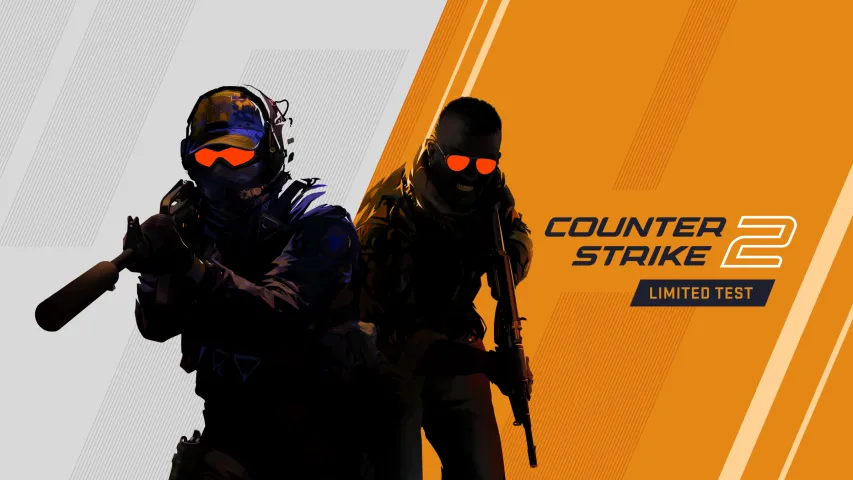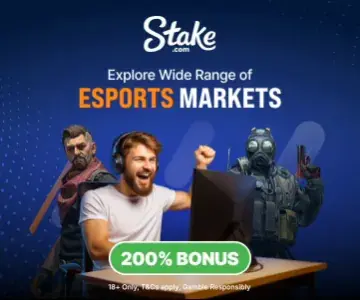- Siemka
Article
13:58, 11.08.2024

Valve has recently introduced a comprehensive set of new rules for tournament organizers (TOs) in the Counter-Strike 2 (CS2) competitive scene. These rules are designed to ensure fair play, transparency, and open competition. In this article, we will delve into the details of these new regulations and explore the positive impact they will have on the CS2 community.
Detailed Breakdown of New Rules
Valve's new rules for TOs, set to take effect after December 31, 2024, establish a structured framework for running competitive events in CS2. Here's a detailed breakdown of the key elements:
Licensing Requirements
- License Requirement: All TOs must obtain a license from Valve to host tournaments. The Limited Game Tournament License is available for smaller events, while larger-scale events require a broader license from Valve.

Event Classification
- Ranked vs. Unranked Events: Tournaments are classified into Ranked and Unranked events. Ranked events contribute to the Valve Regional Standings (VRS), while Unranked events do not.
Prize Pool Limitations for Unranked Events
- Unranked Event Prize Pools: The total compensation for an Unranked Event cannot exceed $100,000. If a TO operates multiple Unranked Events in a year, the total prize pool for all these events cannot exceed $250,000.

Invitation and Qualification Processes
- Direct VRS Invites: Invitations to tournaments are based on the VRS, ensuring that the top-performing teams are given priority.
- Open Qualifiers: TOs must provide transparent and reasonable criteria for Open Qualifiers, promoting fair competition and diversity.
- Wildcard Invites: Additional Wildcard Invites are allowed for top-performing or historically significant teams, ensuring a balanced and competitive tournament field.

Announcement and Publication of Tournament Information
- Announcement Dates: Tier 1 and Wildcard Events must be announced well in advance, with specific timelines for different years. Tier 2 Events require a three-month announcement period.
- Transparency: TOs must publish comprehensive information about the tournament, including prize pools, qualifying processes, and compensation details.
Positive Aspects of the New Rules
Promoting Fair Play and Open Competition
Valve's new rules emphasize the importance of fair play and open competition. By requiring TOs to use the VRS for direct invites and mandating Open Qualifiers, Valve ensures that all teams have a fair chance to compete. This move democratizes the competitive landscape, allowing emerging teams to challenge established ones based on merit.

Enhancing Transparency and Integrity
The new rules mandate transparency in compensation and tournament operations. TOs must disclose detailed information about prize pools, appearance fees, and other forms of compensation. This transparency reduces the potential for conflicts of interest and ensures that all participating teams and players are treated fairly and equally.

Encouraging Diverse and Inclusive Tournaments
By allowing demographic and regional criteria for Open Qualifiers, Valve's new rules promote diversity and inclusion in CS2 tournaments. This approach encourages the participation of underrepresented groups and regions, fostering a more diverse and vibrant competitive scene.
Structured and Predictable Tournament Calendar
The requirement for TOs to announce tournaments well in advance provides a structured and predictable tournament calendar. This helps teams, players, and fans plan and prepare for events more effectively. A well-organized calendar also allows for better scheduling and reduces conflicts between major tournaments.

Boosting the Overall Quality of Competitions
The new rules aim to elevate the overall quality of CS2 competitions. By ensuring that top teams are invited based on their performance and providing clear guidelines for qualification, Valve promotes high-quality, competitive matches. This leads to more thrilling and unpredictable tournaments, enhancing the viewing experience for fans.
Examples of Positive Changes
Tournament organizers like BLAST and PGL have already begun to adapt to Valve’s new rules, showcasing positive changes in the competitive landscape. BLAST's 2025 circuit details include the introduction of open qualifiers and wildcard invites, which align with Valve’s emphasis on transparency and fair play. This shift not only democratizes the entry process for teams but also ensures that the highest-performing teams, regardless of their prior affiliations, have a shot at competing on the biggest stages. Similarly, PGL’s commitment to hosting multiple Tier 1 events in 2025 and 2026 highlights the potential for a more diverse and competitive CS2 scene. These examples illustrate how the new regulations are fostering a more inclusive and merit-based tournament environment.

Broader Impact on the CS2 Community
The broader impact of Valve’s new rules on the CS2 community is profound. By ensuring a fair and transparent competitive environment, these regulations enhance the credibility and integrity of the esports scene. Players from all backgrounds now have a clearer and more equitable path to the top, which can inspire new talent and increase the overall competitiveness of the game. Additionally, fans benefit from a more predictable and structured tournament calendar, allowing for better engagement and planning. The emphasis on fair play and merit-based competition strengthens the community’s trust in the competitive system, fostering a more united and enthusiastic fanbase.

Addressing Potential Concerns
While the new rules are largely positive, there are potential concerns that need addressing. One concern is the stringent requirements for announcing tournaments well in advance, which may pose challenges for newer or smaller tournament organizers who lack the resources to plan years ahead. Additionally, the cap on prize pools for unranked events might discourage some organizers from hosting smaller tournaments, potentially limiting opportunities for up-and-coming teams to compete and gain experience. However, Valve’s emphasis on open qualifiers and wildcard invites can help mitigate these issues by ensuring that even smaller events can play a crucial role in the broader competitive landscape. By addressing these concerns proactively, Valve and the CS2 community can ensure the new rules are implemented smoothly and effectively.
READ MORE: nitr0 is back, but what can he really offer?
Conclusion
Valve’s new rules for tournament organizers mark a significant milestone in the evolution of the Counter-Strike 2 competitive scene. By promoting fair play, transparency, and inclusivity, these regulations pave the way for a healthier and more dynamic esports environment. As tournament organizers adapt to these changes, the CS2 community can look forward to a future of high-quality, thrilling competitions that are open to all talented players. While there are challenges to address, the overall impact of these new rules is overwhelmingly positive, promising a brighter and more equitable future for Counter-Strike 2.







Comments